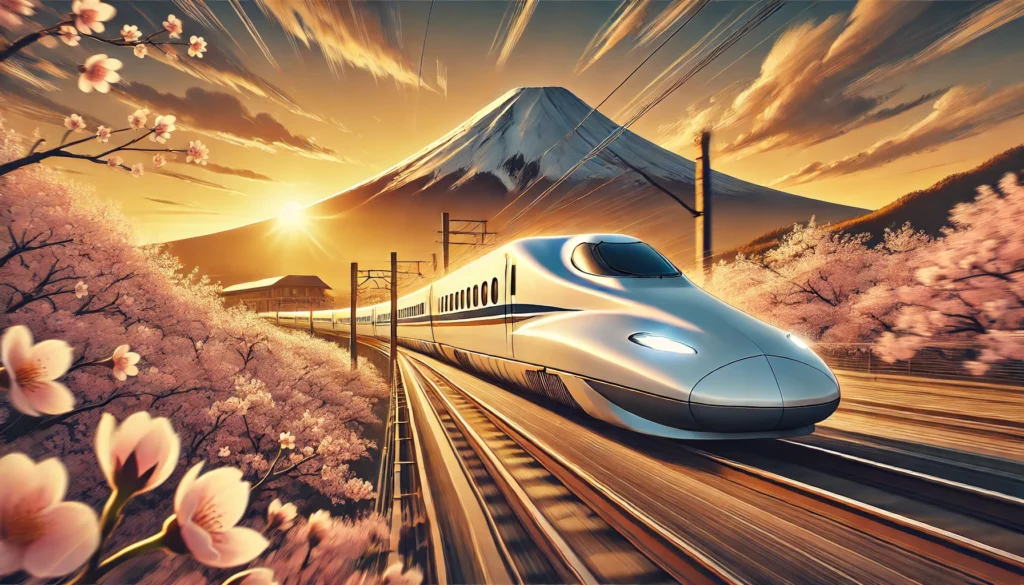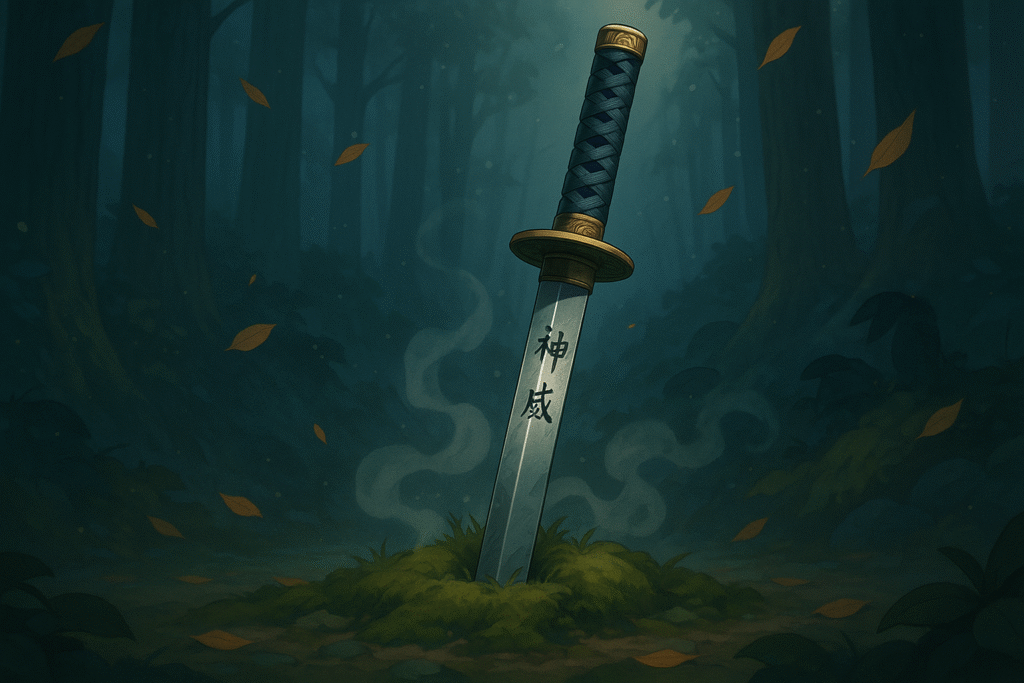Have you ever dreamed of zooming across Japan at lightning speeds, watching the countryside blur past your window as Mount Fuji stands majestically in the distance? Japan’s high-speed rail network offers precisely this experience, combining breathtaking velocity with legendary Japanese efficiency and comfort. In this comprehensive guide, we’ll explore everything you need to know about the fastest trains in Japan, from record-breaking speeds to practical travel tips.
Want to explore Japan’s culture?
Discover Japan’s rich culture, traditions, and hidden gems with our expertly crafted guides. Get insider tips on travel, food, and history. All for free!
Why Japan’s Bullet Trains Are Engineering Marvels
Japan’s famous Shinkansen (新幹線), commonly known as bullet trains, represent one of the most advanced transportation systems in the world. Since their introduction in 1964, these technological marvels have revolutionized rail travel and become an iconic symbol of Japanese innovation.
But exactly how fast is the Shinkansen? The current operational speed champions reach a remarkable 320 km/h (199 mph), making them among the fastest regular service trains globally. However, during test runs, experimental models have achieved even more impressive speeds exceeding 400 km/h!
The network spans nine distinct lines, connecting major cities and remote regions with unparalleled efficiency. Whether you’re planning a trip to Japan or simply fascinated by high-speed rail technology, understanding these magnificent trains will enhance your appreciation for this engineering feat.
The Fastest Bullet Train in Japan: Breaking Down the Speed Champions
When discussing the fastest trains in Japan, several models stand out for their exceptional performance. Let’s examine the speed demons of Japan’s railways:
1. L0 Series Maglev (Experimental)
- Top Speed: 603 km/h (374 mph) – achieved during testing
- Technology: Magnetic levitation (floating above the tracks)
- Status: Not yet in regular service, planned for 2027
The L0 Series represents the future of rail travel, utilizing magnetic levitation technology to eliminate friction and achieve unprecedented speeds. While not currently in regular service, this revolutionary train is set to connect Tokyo and Nagoya in just 40 minutes when completed.
2. N700S Series
- Top Operational Speed: 320 km/h (199 mph)
- Lines: Tokaido and Sanyo Shinkansen
- Special Features: Enhanced aerodynamics, advanced suspension system
The N700S represents the latest evolution of the Shinkansen fleet, with improved acceleration, braking performance, and energy efficiency. This sleek bullet train primarily serves the busy Tokyo-Osaka-Fukuoka corridor.
3. E5/H5 Series
- Top Operational Speed: 320 km/h (199 mph)
- Lines: Tohoku and Hokkaido Shinkansen
- Notable Feature: Long, aerodynamic “duck-bill” nose design
The distinctive E5 and H5 Series trains are the workhorses of northern routes, connecting Tokyo with destinations in northern Honshu and Hokkaido. Their extended nose design helps reduce noise and minimize air pressure when entering tunnels at high speeds.
4. E6 Series
- Top Operational Speed: 320 km/h (199 mph)
- Lines: Tohoku and Akita Shinkansen
- Design Element: Striking fuschia stripe and compact design
These trains are unique for their ability to operate on both standard and narrow-gauge tracks, allowing seamless travel from Tokyo to more remote regions in Akita prefecture without transfers.

Shinkansen Speed Comparison: How Do Different Lines Stack Up?
Not all Shinkansen lines are created equal when it comes to speed. The network features a variety of services designed to meet different travel needs:
| Line | Maximum Speed | Distance | Key Destinations | Travel Time |
|---|---|---|---|---|
| Tokaido | 285 km/h | 515 km | Tokyo, Nagoya, Kyoto, Osaka | 2h 22m (fastest) |
| Sanyo | 300 km/h | 644 km | Osaka, Okayama, Hiroshima, Fukuoka | 2h 30m (fastest) |
| Tohoku | 320 km/h | 674 km | Tokyo, Sendai, Morioka, Aomori | 2h 59m (fastest) |
| Hokkaido | 260 km/h | 149 km | Aomori, Hakodate | 1h 11m |
| Hokuriku | 260 km/h | 345 km | Tokyo, Nagano, Kanazawa | 2h 28m |
| Joetsu | 240 km/h | 269 km | Tokyo, Niigata | 1h 37m |
| Kyushu | 260 km/h | 288 km | Fukuoka, Kumamoto, Kagoshima | 1h 32m |
| Akita (Mini) | 320 km/h* | 127 km | Morioka, Akita | 53m |
| Yamagata (Mini) | 320 km/h* | 148 km | Fukushima, Yamagata, Shinjo | 1h 11m |
*Speeds on mini-Shinkansen lines vary, with high-speed sections and reduced-speed sections.
The Tohoku Shinkansen deserves special mention in any Shinkansen speed comparison, as it features the longest stretches where trains operate at the maximum 320 km/h speed. When analyzing how fast the Shinkansen travels, it’s important to note that actual operating speeds may differ from maximum design speeds due to route conditions, including curves, urban areas, and tunnels.
The Evolution of Speed: Historical Milestones
The pursuit of faster trains has been a constant in Japan’s railway development:
- 1964: The original 0 Series Shinkansen debuts with a top speed of 210 km/h
- 1992: The 300 Series raises the bar to 270 km/h
- 1997: The 500 Series becomes the first to reach 300 km/h in regular service
- 2013: The E5/H5 Series begins operation at 320 km/h
- 2015: L0 Maglev test train achieves world record 603 km/h
This relentless innovation continues today, with Japan Railways constantly testing new technologies to push the boundaries of what’s possible in rail transportation.
Beyond Speed: The Complete Shinkansen Experience
While velocity is impressive, the Shinkansen experience offers much more than just getting from point A to point B quickly:
Punctuality
Japanese trains are renowned for their punctuality, with the average delay across the entire Shinkansen network being less than one minute. This remarkable reliability is a core aspect of what makes the fastest trains in Japan so exceptional.
Comfort and Amenities
Even at breathtaking speeds, the ride remains remarkably smooth. Passengers enjoy:
- Spacious seating with generous legroom
- Large windows for sightseeing
- Convenient power outlets at every seat
- Free Wi-Fi throughout the train
- Food service including bento boxes and beverages
- Clean, accessible restrooms
- Designated smoking rooms (on certain trains)
Train Classes
Travelers can choose from three main classes:
- Ordinary Car: Comfortable 3×2 seating configuration
- Green Car: First-class option with 2×2 seating, more legroom, and enhanced services
- Gran Class: Premium experience with reclining seats, attendant service, and complimentary refreshments (available on select trains)
As I explained in my recent post about the ultimate guide to learning Japanese, understanding transportation vocabulary is essential for any traveler to Japan, especially when navigating the sophisticated Shinkansen system.
Love Japan? Stay in the Loop!
Get the best of Japan straight to your inbox: language, culture & travel insights!
Practical Guide: How to Ride the Fastest Bullet Train in Japan
Ticketing Options
- Individual Tickets: Purchase base fare + express fare + optional seat reservation
- Japan Rail Pass: Unlimited travel on most Shinkansen lines for 7, 14, or 21 days
- Note: The Japan Rail Pass now covers all Shinkansen trains, including Nozomi and Mizuho services, with a supplementary ticket purchase required.
Train Types by Speed
On major Shinkansen lines, multiple service types operate at different speeds:
- Nozomi/Mizuho: The fastest services, making minimal stops
- Hikari/Sakura: Semi-express services, making a moderate number of stops
- Kodama/Tsubame: Local services, stopping at all stations
For the ultimate speed experience, choose Nozomi services on the Tokaido line or Hayabusa services on the Tohoku line.
Booking Tips
- Reserve seats in advance during peak travel seasons (cherry blossom, Golden Week, New Year)
- For the smoothest ride, choose seats in the middle cars
- Download the official JR apps for real-time updates and digital tickets
- Consider using the luggage delivery service for large bags
If you’re planning to explore Japan extensively by train, don’t miss our guide on the best way to study Japanese on your own, which includes essential travel phrases to enhance your journey.
Beyond the Mainstream: Lesser-Known Facts About Japan’s Fastest Trains
Environmental Impact
Despite their impressive speeds, Shinkansen trains are remarkably eco-friendly:
- Per passenger, they produce approximately 1/12th the CO₂ emissions of air travel
- The newest models incorporate power-saving technologies and regenerative braking
- Their aerodynamic design reduces noise pollution in urban areas
Safety Record
In over 50 years of operation with billions of passengers carried, the Shinkansen network has maintained an impeccable safety record with zero passenger fatalities due to derailments or collisions—a testament to Japanese engineering and operational excellence.
Cultural Impact
The Shinkansen has become deeply embedded in Japanese culture:
- Unique “Shinkansen bento” (ekiben) featuring regional specialties
- Themed trains celebrating popular characters or regional attractions
- Precise arrival/departure rituals including the famous “7-minute cleaning miracle”
- Special viewing platforms at stations for train enthusiasts
For travelers interested in experiencing Japan’s food culture alongside its transportation marvels, our guide to learning Japanese food vocabulary provides an excellent complement to your Shinkansen adventures.

Looking to the Future: The Next Generation of Speed
Japan continues to push the boundaries of rail technology:
ALFA-X Experimental Train
Currently undergoing testing, this next-generation Shinkansen features:
- A record-breaking 22-meter-long nose for improved aerodynamics
- Target operational speed of 360 km/h
- Advanced earthquake detection systems
- Testing grounds for future technologies
Chuo Shinkansen Maglev Line
The future Maglev line will revolutionize travel between Japan’s major cities:
- Tokyo to Nagoya in 40 minutes (vs. current 1h 40m)
- Tokyo to Osaka in 67 minutes (vs. current 2h 22m)
- Projected opening date for Tokyo-Nagoya section: 2027
- Estimated project cost: over $80 billion USD
Resources for Travelers
If you’re planning to experience the fastest trains in Japan firsthand, these resources will help you prepare:
- Official JR Group website for schedules and fares
- Japan Rail Pass information centers at major stations
- Translation apps for navigating station announcements
Learning Japanese for Your Train Adventure? Check out our free guides:
- Counting to 100 in Japanese (essential for understanding train times)
- 100+ Essential Japanese Phrases (includes transportation vocabulary)
- Hiragana & Katakana Cheat Sheet (for reading station names)
- JLPT N5 Kanji Cheat Sheet (includes common transportation kanji)
Visit our resources page to download these free guides before your trip!

Q&A: Common Questions About Japan’s Fastest Trains
What is the fastest bullet train in Japan?
The fastest bullet train in regular service in Japan is the E5/H5 Series Shinkansen, which operates at 320 km/h (199 mph) on the Tohoku and Hokkaido lines.
How fast is the Shinkansen compared to other high-speed trains?
Japan’s Shinkansen (320 km/h) is comparable to China’s Fuxing Hao (350 km/h) and France’s TGV (320 km/h), making it among the world’s fastest operational train services.
Is the Japan Rail Pass worth it for riding the Shinkansen?
Yes, the Japan Rail Pass offers excellent value for tourists planning to make multiple Shinkansen journeys, potentially saving hundreds of dollars compared to individual tickets.
What happens if I miss my Shinkansen?
If you have a reserved seat and miss your train, you can typically exchange your ticket for the next available train at a ticket office, though you may lose your seat reservation.
How early should I arrive for a Shinkansen train?
Unlike airports, Shinkansen stations require minimal waiting time. Arriving 15-20 minutes before departure is usually sufficient, as security checks are not required.
Are the fastest Shinkansen trains more expensive than slower options?
Yes, the fastest services (Nozomi, Hayabusa, etc.) typically cost slightly more than semi-express or local services on the same route.
Conclusion: Experience Japan at 320 km/h
The fastest trains in Japan offer more than just rapid transportation—they provide a window into Japanese culture, technology, and efficiency. From the sleek aerodynamics of the E5 Series to the mind-bending speed of experimental Maglev trains, the Shinkansen network represents Japan’s ongoing commitment to pushing the boundaries of what’s possible.
Whether you’re planning a trip to experience these engineering marvels firsthand or simply appreciating them from afar, the story of Japan’s bullet trains is one of human ingenuity and the relentless pursuit of improvement. As Japan continues to refine and expand its high-speed rail network, the future promises even faster, more efficient connections between the country’s diverse regions.
So the next time you’re planning a journey across Japan, remember that the fastest way to experience this beautiful country might just be aboard a train traveling at 320 kilometers per hour, offering both speed and a uniquely Japanese travel experience that no other mode of transportation can match.
What’s your experience with Japan’s bullet trains? Have you ridden the fastest Shinkansen routes? Share your stories in the comments below!
Join Fellow Japan Enthousiasts!
Ask questions, get study tips, and take part in weekly challenges. Join a community of motivated learners exploring both the language and culture of Japan!




